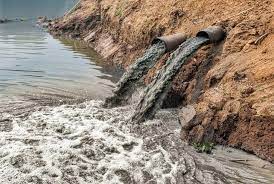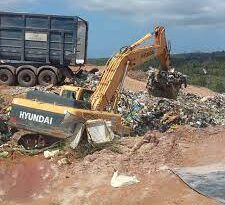Landfills: A Comprehensive Guide to Landfills
Landfills, vast spaces where our discarded items find their final resting place, have become an enduring symbol of our consumer-driven society. As populations grow and consumption rises, so does the mounting waste that ends up in these colossal repositories.
The story of landfills is an eye-opening exploration of our collective habits, highlighting the urgent need for responsible waste management.
Picture a landfill: a sprawling landscape of debris, filled to the brim with everything from household trash to industrial waste. As these sites continue to expand, they present a series of pressing environmental and social challenges that demand our attention.
Hazardous materials and chemicals seep into the soil, contaminating groundwater and endangering nearby communities. The decomposition of organic waste generates harmful greenhouse gases, contributing to climate change.
The issue with landfills is not solely limited to their negative environmental impacts. They also raise questions about our consumption patterns and the often-disregarded “out of sight, out of mind” mentality. When we toss items into the trash without considering their lifecycle, we perpetuate a linear model of production and disposal that is ultimately unsustainable.
Addressing the landfill predicament requires a multi-faceted approach. Reducing waste at the source through conscious consumption and recycling is a crucial step. Communities can embrace composting and adopt circular economy practices to minimize the amount of trash ending up in landfills. Government policies play a vital role too, incentivizing eco-friendly practices and investing in waste management infrastructure.
Innovative technologies offer hope for a more sustainable future. Landfill mining, for instance, involves extracting valuable resources from existing landfills, lessening the burden on new sites and promoting resource recovery. Additionally, waste-to-energy facilities convert non-recyclable waste into renewable energy, reducing greenhouse gas emissions and minimizing landfill usage.
Education also plays a pivotal role in combating the landfill issue. Raising awareness about the consequences of excessive waste generation fosters a sense of responsibility and encourages individuals and businesses to adopt eco-conscious practices.
Ultimately, landfills are an undeniable reminder of the consequences of unchecked waste generation and inadequate waste management. As we grapple with the ever-growing challenge of waste disposal, it is imperative that we unite in our efforts to reduce, reuse, and recycle.
By embracing sustainability, we can reshape the future of landfills and move towards a cleaner, greener world. The journey towards a waste-free society begins with each one of us making mindful choices for the well-being of our planet and future generations.
Types of Landfills
There are several types of landfills, each designed to handle different types of waste and cater to specific environmental and safety considerations.
Here are some common types of landfills:
1. Municipal Solid Waste (MSW) Landfills: These are the most common type of landfills and are designed to handle household waste, such as food scraps, paper, plastics, and other non-hazardous materials.
2. Industrial Landfills: Specifically engineered to manage non-hazardous waste generated by industrial facilities. These may include waste from factories, construction sites, and other commercial activities.
3. Hazardous Waste Landfills: Strictly regulated and designed to handle hazardous materials, including toxic chemicals, flammable substances, and other dangerous waste that poses significant risks to human health and the environment.
4. Construction and Demolition (C&D) Landfills: Intended for debris resulting from construction and demolition activities, such as concrete, wood, metals, and other materials.
5. Bioreactor Landfills: These landfills use a controlled process to accelerate the decomposition of waste, resulting in faster waste breakdown and higher production of landfill gas (mostly methane) that can be harnessed for energy.
6. Sanitary Landfills: Engineered to minimize environmental impacts, sanitary landfills have systems in place to prevent leachate (liquid produced by waste decomposition) from contaminating surrounding areas.
7. Ash Landfills: Designed to dispose of ash produced from the incineration of waste, particularly common for the disposal of waste from waste-to-energy facilities.
8. Low-Level Radioactive Waste (LLRW) Landfills: Specifically designated for the disposal of low-level radioactive materials, typically produced by nuclear power plants, research facilities, and medical institutions.
9. Green Waste Landfills: These landfills are intended for organic waste, such as yard trimmings and garden waste, and are designed to encourage composting and natural decomposition.
Each type of landfill requires careful planning, engineering, and adherence to regulations to ensure that waste is managed responsibly, minimizing environmental impact and protecting human health.
Read Also: What is some advantages of solar energy?
Recycling

Recycling is a fundamental pillar of sustainable waste management that offers hope in tackling the ever-mounting waste dilemma. It is a process that transforms discarded materials into new products, reducing the demand for raw resources and lessening the burden on our environment.
Embracing recycling is not only an individual responsibility but a collective effort that can significantly impact our planet for the better.
The concept of recycling is simple yet powerful. Instead of sending items to landfills or incinerators where they may contribute to pollution and resource depletion, recyclable materials are collected, sorted, and processed to be used again in the manufacturing of new goods. Commonly recycled materials include paper, glass, plastics, metals, and certain types of electronics.
Recycling offers a range of environmental benefits. First and foremost, it conserves natural resources, as it takes less energy to produce products from recycled materials compared to using virgin resources.
For instance, recycling paper can save trees and reduce water consumption in the papermaking process. Similarly, recycling metals reduces the need for mining and energy-intensive extraction processes.
By diverting waste from landfills and incinerators, recycling also helps to lower greenhouse gas emissions. Organic waste that decomposes in landfills produces methane, a potent greenhouse gas. Recycling such waste or composting it can significantly reduce these emissions.
Furthermore, recycling plays a crucial role in curbing pollution. Improper disposal of waste, especially plastics, can lead to littering in our oceans and on land, causing harm to wildlife and ecosystems. Recycling plastics ensures that they are properly managed, reducing their negative impacts on the environment.
Recycling also supports local economies and job creation. The recycling industry provides employment opportunities in collection, processing, and manufacturing, contributing to the overall economic growth.
However, to reap the full benefits of recycling, we need to address some challenges. Contamination of recyclables, improper sorting, and lack of awareness can hinder the recycling process. Proper education and clear guidelines for recycling can help improve participation and minimize contamination.
As responsible global citizens, we must foster a culture of recycling. Embrace the practice of recycling at home, work, and in public spaces. Support recycling initiatives and advocate for policies that promote recycling and sustainable waste management.
Together, through recycling and responsible waste practices, we can pave the path to a greener, cleaner, and more sustainable future for generations to come. Let us remember that every small effort to recycle counts, making a significant impact on our planet’s health and the well-being of all living beings.
Read Also: Do Landfills Decompose? A Closer Look at the Process
Waste Disposal

Waste disposal is the critical process of managing and safely disposing of discarded materials in a manner that minimizes environmental impact and protects human health. As our modern societies continue to generate significant amounts of waste, finding effective and sustainable waste disposal solutions becomes increasingly crucial.
The journey of waste disposal begins at the source – our homes, businesses, industries, and public spaces. At this stage, waste is collected, either through municipal waste collection services or private waste management companies. Proper waste collection is essential to ensure that all types of waste are gathered efficiently and segregated appropriately, separating recyclables from non-recyclables and hazardous from non-hazardous materials.
Once collected, the waste undergoes sorting and treatment. Recycling facilities separate and process recyclable materials to be used in the production of new products. Composting facilities manage organic waste, turning it into nutrient-rich compost that can be used to enrich soil and support agriculture.
However, not all waste can be recycled or composted. Non-recyclable and hazardous waste must be treated carefully to prevent harm to the environment and human health. Specialized facilities, such as incinerators and hazardous waste treatment plants, are equipped to handle these materials safely. Incineration can convert certain non-recyclable waste into energy, reducing its volume and producing heat or electricity.
For waste that cannot be recycled, composted, or incinerated, landfills remain the last resort. These engineered sites are designed to securely contain waste, preventing its direct contact with the environment. To minimize environmental contamination, modern landfills employ liners and monitoring systems to manage leachate and gas emissions.
Although landfills provide a final disposal option, they should be viewed as a last resort due to their potential environmental impact. Recycling and waste reduction efforts are essential in reducing the volume of waste sent to landfills and promoting sustainability.
Proper waste disposal practices are governed by regulations and standards set by local and national authorities. Compliance with these guidelines is essential for waste management companies and individuals alike to protect the environment and public health.
Waste disposal is not solely the responsibility of waste management entities. Every individual and business plays a vital role in generating waste responsibly, reducing unnecessary waste, and adopting recycling practices. Engaging in sustainable consumption, reusing items, and supporting waste reduction initiatives are simple yet impactful steps towards a cleaner, healthier planet.
Additionally, waste disposal encompasses a comprehensive process that requires collaboration and responsibility from all stakeholders. By prioritizing recycling, composting, and responsible waste management, we can create a more sustainable future for our planet and leave a positive legacy for generations to come.
Environmental Impacts
The environmental impacts of human activities have become increasingly evident as our global population and consumption patterns continue to grow. While human development has brought numerous benefits, it has also led to significant and often negative effects on the natural world.
Some of the prominent environmental impacts are as follows:
1. Climate Change: One of the most pressing environmental challenges, climate change results from the accumulation of greenhouse gases in the atmosphere. These gases, primarily carbon dioxide from burning fossil fuels, trap heat and lead to global warming, causing rising sea levels, extreme weather events, and disruptions to ecosystems and wildlife.
2. Loss of Biodiversity: Human activities such as deforestation, habitat destruction, and pollution have led to a rapid decline in biodiversity. Species extinction rates are increasing, disrupting the delicate balance of ecosystems and reducing nature’s ability to provide essential services like pollination and pest control.
3. Deforestation: The clearing of forests for agriculture, logging, and urbanization leads to the loss of valuable carbon sinks, biodiversity hotspots, and natural habitats for countless species. Deforestation contributes significantly to climate change and reduces the Earth’s capacity to absorb carbon dioxide.
4. Pollution: Pollution from industrial processes, agricultural runoff, and improper waste disposal contaminates air, water, and soil. Air pollution affects human health and contributes to climate change, while water pollution harms aquatic ecosystems and threatens drinking water supplies.
5. Water Scarcity: Increasing demand for freshwater, coupled with pollution and climate change, has led to water scarcity in many regions. This scarcity not only affects human populations but also puts stress on aquatic ecosystems and wildlife.
6. Ocean Acidification: The absorption of excess carbon dioxide by the world’s oceans results in ocean acidification, which poses a serious threat to marine life, particularly coral reefs and shell-forming organisms.
7. Depletion of Natural Resources: Unsustainable extraction and consumption of natural resources, such as fossil fuels, minerals, and fresh water, deplete finite resources and can lead to economic and social challenges.
8. Land Degradation: Intensive agriculture, urbanization, and overexploitation of land resources have contributed to land degradation, reducing soil fertility and compromising ecosystems’ ability to provide essential services.
9. Plastic Pollution: The widespread use of single-use plastics and improper waste management has led to a global plastic pollution crisis, adversely impacting marine life, ecosystems, and human health.
10. Loss of Ecosystem Services: As natural habitats are destroyed or altered, ecosystems lose their ability to provide critical services, such as water purification, carbon sequestration, and flood control.
Addressing these environmental impacts requires collective action and a shift towards sustainable practices. Implementing renewable energy sources, conserving biodiversity, practicing responsible waste management, and promoting sustainable agriculture are some of the steps that can help mitigate the negative effects of human activities on the environment and foster a more harmonious relationship between humanity and the planet.
Landfill Regulations
Landfill regulations are essential guidelines and laws set forth by governments to ensure the safe and responsible management of waste disposal in landfills. These regulations aim to protect the environment, prevent pollution, and safeguard public health from the potential adverse impacts of improper waste disposal.
The specifics of landfill regulations vary from country to country and can also be influenced by regional and local authorities.
However, some common elements of landfill regulations include:
1. Site Selection and Design: Regulations typically mandate specific criteria for selecting suitable landfill locations, considering factors such as proximity to water bodies, population centers, and geological stability. Landfills must be designed with appropriate liners and drainage systems to prevent leachate (contaminated liquid from waste decomposition) from seeping into the soil and groundwater.
2. Waste Classification and Segregation: Regulations often require waste to be classified and segregated before disposal to ensure that hazardous materials are handled separately from non-hazardous waste. This helps minimize potential environmental and health risks associated with hazardous substances.
3. Environmental Monitoring: Landfills are typically subject to rigorous environmental monitoring requirements. Regular testing of groundwater, surface water, and air quality is carried out to detect any signs of contamination and ensure compliance with environmental standards.
4. Landfill Operations and Closure: Regulations outline the proper procedures for landfill operations, including waste compaction, daily cover placement, and maintaining the landfill to minimize odors and pests. Closure plans are also a key aspect, ensuring that once the landfill reaches its capacity, it is properly capped and monitored to prevent further environmental harm.
5. Methane and Landfill Gas Management: Landfills produce methane, a potent greenhouse gas. Regulations may require the capture and utilization of landfill gas to mitigate its climate impact and potentially generate renewable energy.
6. Financial Assurance: Many jurisdictions require landfill operators to provide financial assurances or bonds to cover the costs of closure, post-closure care, and potential environmental remediation in case of non-compliance or unexpected environmental issues.
7. Reporting and Recordkeeping: Landfill operators are often required to maintain detailed records of waste acceptance, waste tracking, environmental monitoring, and other operational aspects. Regular reporting to regulatory authorities is necessary to demonstrate compliance.
8. Public Participation and Communication: Many regulations also emphasize public participation and communication, ensuring that nearby communities are informed about landfill operations, potential risks, and any mitigation measures in place.
Compliance with landfill regulations is crucial for waste management companies and landfill operators to protect the environment and public health while managing waste effectively. These regulations evolve over time as new research and technologies emerge, aiming to continually improve waste management practices and minimize environmental impacts.
Read Also: Earth Angel Rose Flowers: All You Need To Know About



